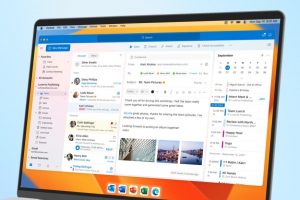We all know that personalization makes a difference. At Christmastime, what makes you feel better, a gift from a loved one that was picked out perfectly for you or a regifted gift card? Personalization makes a difference.
So it comes as no surprise that personalization makes a difference when it comes to the experiences you provide to your customers. In fact, 64% of customers say their experience with a brand is more important than a product’s price in their purchase decision. Additionally, 57% of customers are okay with sharing their personal data to get a more personalized experience.
That goes to show that customers want a positive experience centered around personalization. The main problem is, however, that only 22% of customers are satisfied with the current level of personalization that brands deliver. There’s a major disconnect between what customers want and what brands are delivering.
Low customer satisfaction with personalization levels showcases that many brands struggle with crafting a customer engagement strategy that resonates. And that’s understandable. Brands deal with a multitude of challenges when it comes to knowing their customers and creating actionable insights and personalized engagements. Those woes may be centered around a lack of data—or a lack of the ability to analyze it, difficulty in creating a seamless omnichannel experience, or cumbersome tech platforms.
But now, Localytics has crafted a simple, but effective framework to build and deliver personalized customer engagements. And it’s based on the six Ws we all learned in grade school: who, what, where, when, why, and how? (Yes, “how” isn’t a W—did my primary school teachers think I would just let that go unnoticed? I see you Mr. Daniels!)
Let me elaborate. For example, let’s say that you’re responsible for driving higher engagement rates for your media brand. I’ll take you through how you can personalize each facet of your campaign by using our 6Ws framework:
Why: The foundation to your campaign and it’s best to start here.
Why are you running this campaign? Are you promoting a new product or is there a BOGO deal going on? For this media example, the “why” is to promote a new series starring Jennifer Aniston. The “why” here is fairly obvious—they want to increase their content viewership.
What: The campaign structure and the creative that will be used.
In the example, the campaign structure will be promoting new content. The creative can be personalized to each user. The copy may reference what the new show is about to fans of the genre or fans of Jennifer Aniston—a GIF of Rachel Green cheering. You know the one.
Who: The audience for this campaign.
For the campaign, you may use profile data like gender, age, or location for demographics that the show may resonate with. But add in behavioral data like fans of similar shows the brand owns based on the new show’s genre. Or fans of Jennifer Aniston’s filmography within your content library.
When: The time the campaign is sent to your user’s device.
Everyone has different schedules and for this campaign, you’ll determine the best possible time to send to users based on when they are most likely to open the app. Maybe that’s after they get home from work or right before bed.
Where: Where are you going to promote this campaign?
Some users will prefer to view content on their mobile apps, so you can send them a push notification. But others stream on their laptops so web push would be more appropriate.
How (often): Some users engage more than others with your notifications.
You have to find a healthy balance between too much and too little. You may choose to send campaigns only to users who have interacted with a push notification specifically or have opened your app within the last month.
Next time you’re building out a marketing campaign, be sure to use this 6Ws framework to engage with multiple groups of your audience. Still not convinced that this framework will improve your engagement rates? We found that personalization has proven to improve customer engagement, with an average increase of 4.7x in app sessions over a 7 day period and an average 4.1x increase in click-through conversations.
If you’re interested in learning even more about our 6Ws of Personalization Framework, be sure to watch our recent on-demand webinar, Go Beyond Segmentation to Really Nail Personalized Customer Engagement. In this presentation we dive deeper into the problems many brands are facing and how the 6Ws can help. We’ll go over each personalization category in more detail and how your brand can utilize this process to excel in your efforts to craft the best possible customer experience.
View our on-demand webinar here to learn more.
Business & Finance Articles on Business 2 Community
(21)
Report Post





